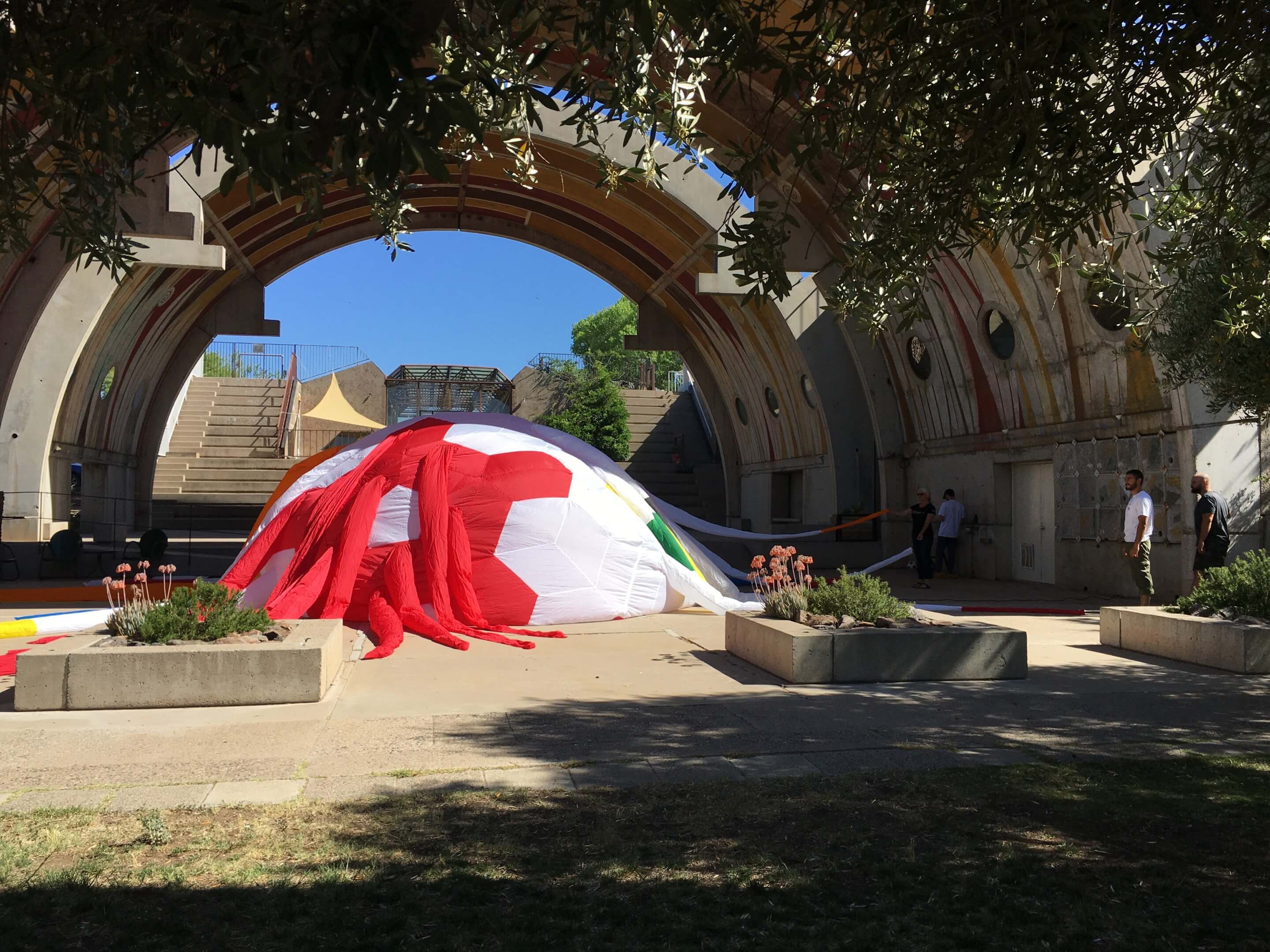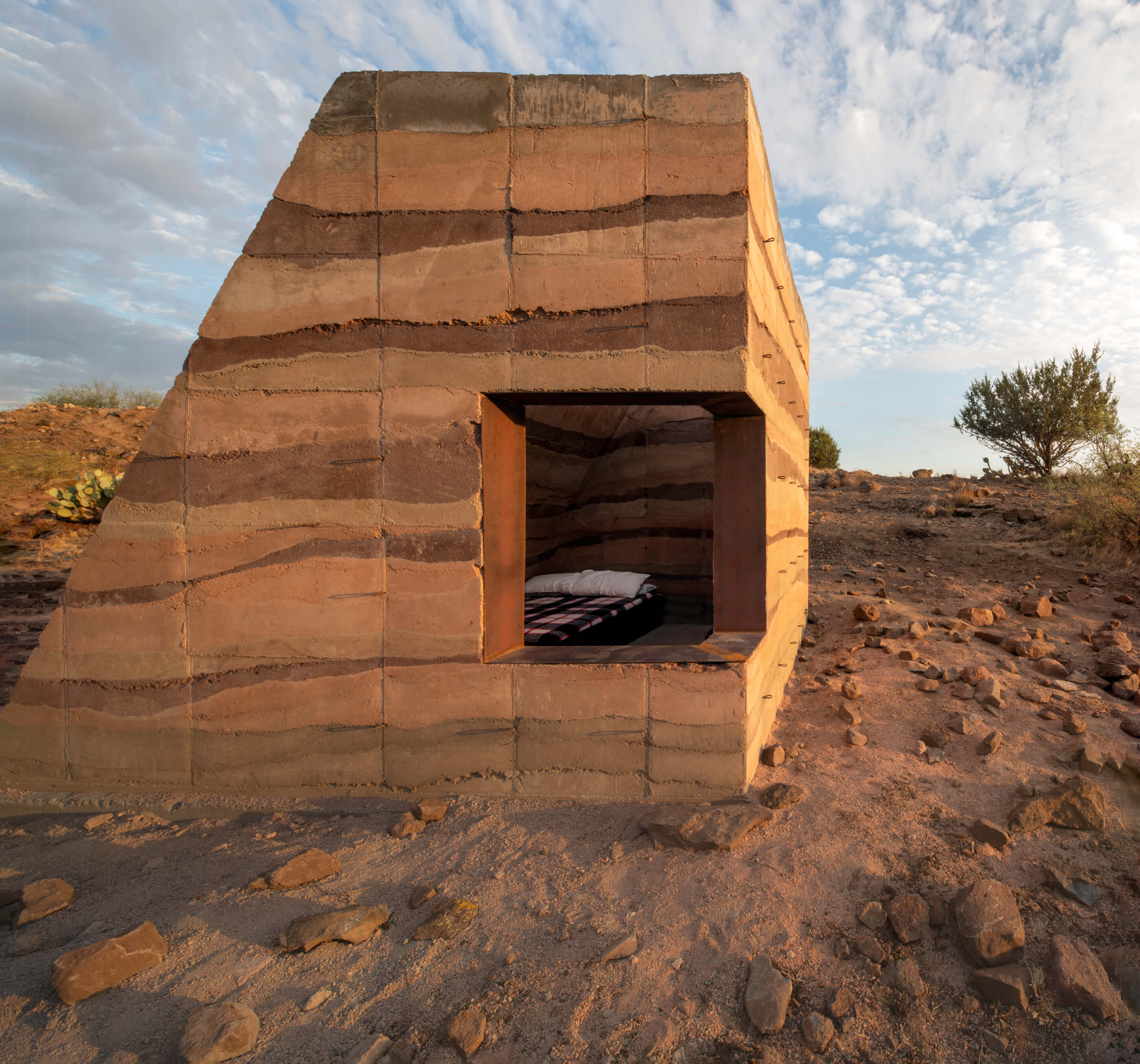Following its tumultuous 2020 departure from Taliesin West in the Phoenix suburb of Scottsdale, the School of Architecture (SoA) has hit the ground running at its new home in Arcosanti, 76 miles north. There, at the experimental desert mesa town developed by architect Paolo Soleri, SoA recently unveiled the first generation of thesis projects at its new campus.
The thesis projects are a continuation of SoA’s long-standing program developed by Frank Lloyd Wright in 1932: Over the course of three semesters, graduating students, with the guidance of the faculty under the new leadership of Dean Stephanie Lin and President Chris Lasch, develop and construct small shelters of varying permanence and materiality. The shelters are the proof-of-concept for a written thesis that explores discourses of wider contemporary issues within the field.

“The realization of the shelter project echoes a kind of professional building process in that students go through a form of research and design phase, coming up with schematic designs and developing them further, leading to a form of review by the Shelter Committee,” Lasch said. “The drawings and schemes are vetted for life and safety issues, for constructability, as well as budget and schedule feasibility before receiving the green light; it is a bit more supportive and nurturing, than, say, the New York City Department of Buildings, but is more comprehensive and rigorous than a typical studio project.” On-site, the projects are also supported by a construction manager as well as a construction adviser.
Arcosanti is over an hour’s drive north of Phoenix, which posed problems for sourcing materials as well as volunteer labor: Architects could more easily pop by for a few hours to lend a hand at Taliesin West, and forays to The Home Depot were less of an expedition. However, the remoteness of the new campus encourages students to formulate their projects in a collaborative manner. Additionally, Arcosanti is home to a resident community of approximately 60 people, which fosters greater opportunities for interdisciplinary dialogue, like that with the Arco Agritecture agricultural program.
“If everyone needs to pour concrete, they collectively decide what day that concrete is going to be delivered in a single truck, which allows the students to share resources across projects, and the construction mentor facilitates these conversations,” Lin said. “The projects are also doubling as both shelters to live in as well as pieces of infrastructure for the Arcosanti community.”

The shelters developed by students demonstrate curious material investigation as well as impressive construction know-how. Jessica Martin’s Cinder is a monolith of rammed earth with weaving striations of soil and sand sourced from the surrounding area. Biopod 01, designed by Solomon Edelman, is an almost Paleolithic thin-shell concrete dwelling that bears some resemblance to the sand-cast and concrete structures that populate Arcosanti. Shiro, a collaboration between student Michele Yeeles and Arcosanti’s agriculture program, seeks to minimize environmental impact through measures such as the use of mycelium for insulation panels. Resembling a cluster of minerals, Azrien Isaac’s Arch-i-Part investigates a kit-of-parts approach to shelter design through a system of rigid foam devices coated in an epoxy typically used for truck bed lining and held together by friction-fit fasteners. Lastly, Shelby Hamlet’s Scuttlebutt explores the ephemerality of inflatable construction with a structure composed of sewn ripstop nylon.
All the shelters were imported into a 3D digital environment dubbed Shelter World by teaching fellow Leah Wulfman, in collaboration with Some Place Studio partner Bika Rebek. The platform allowed for a participatory format for the final reviews and for student-led video tours.
There will be some changes in the years ahead, such as the development of separate paths for different shelter typologies. But for now, so far, so good.











